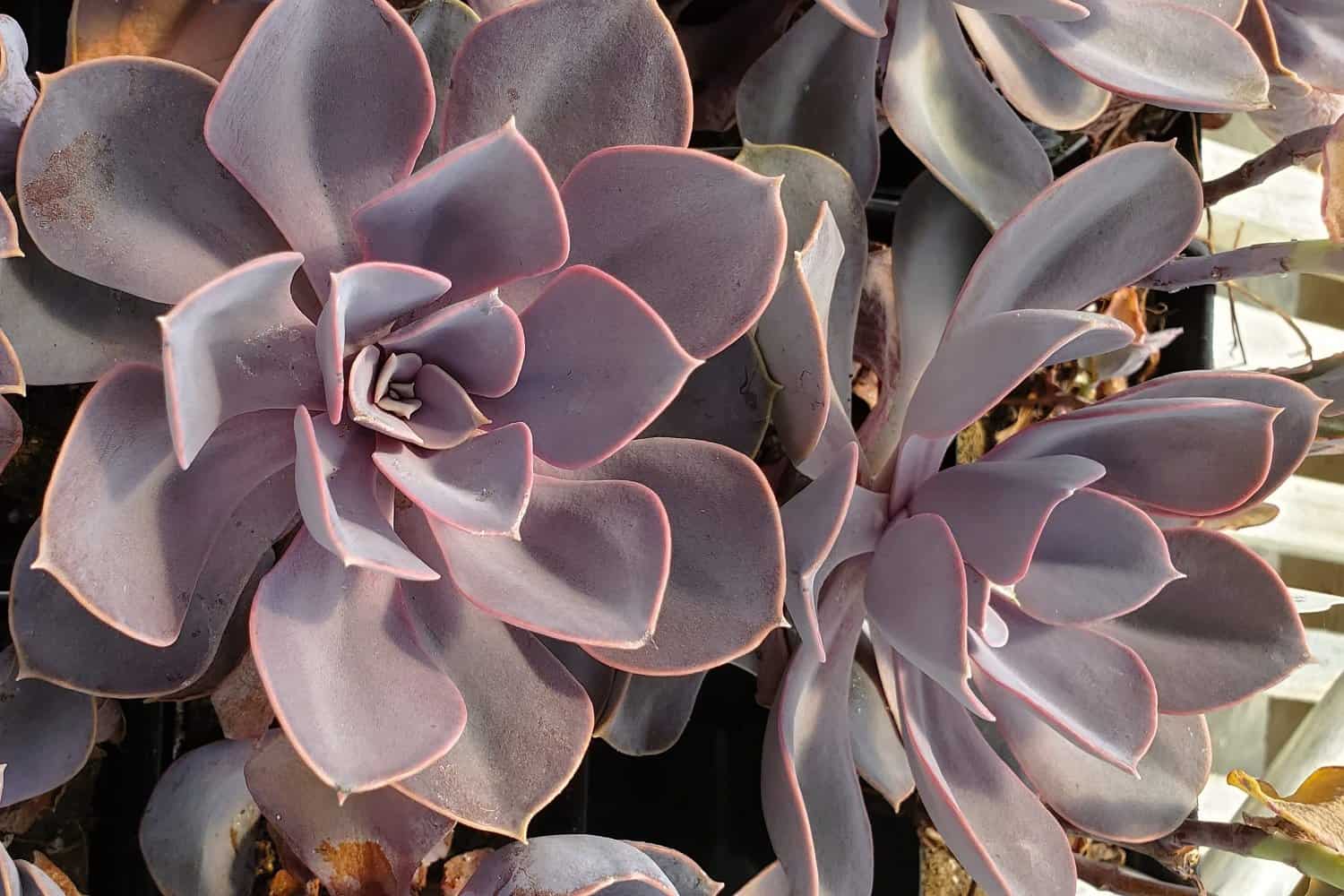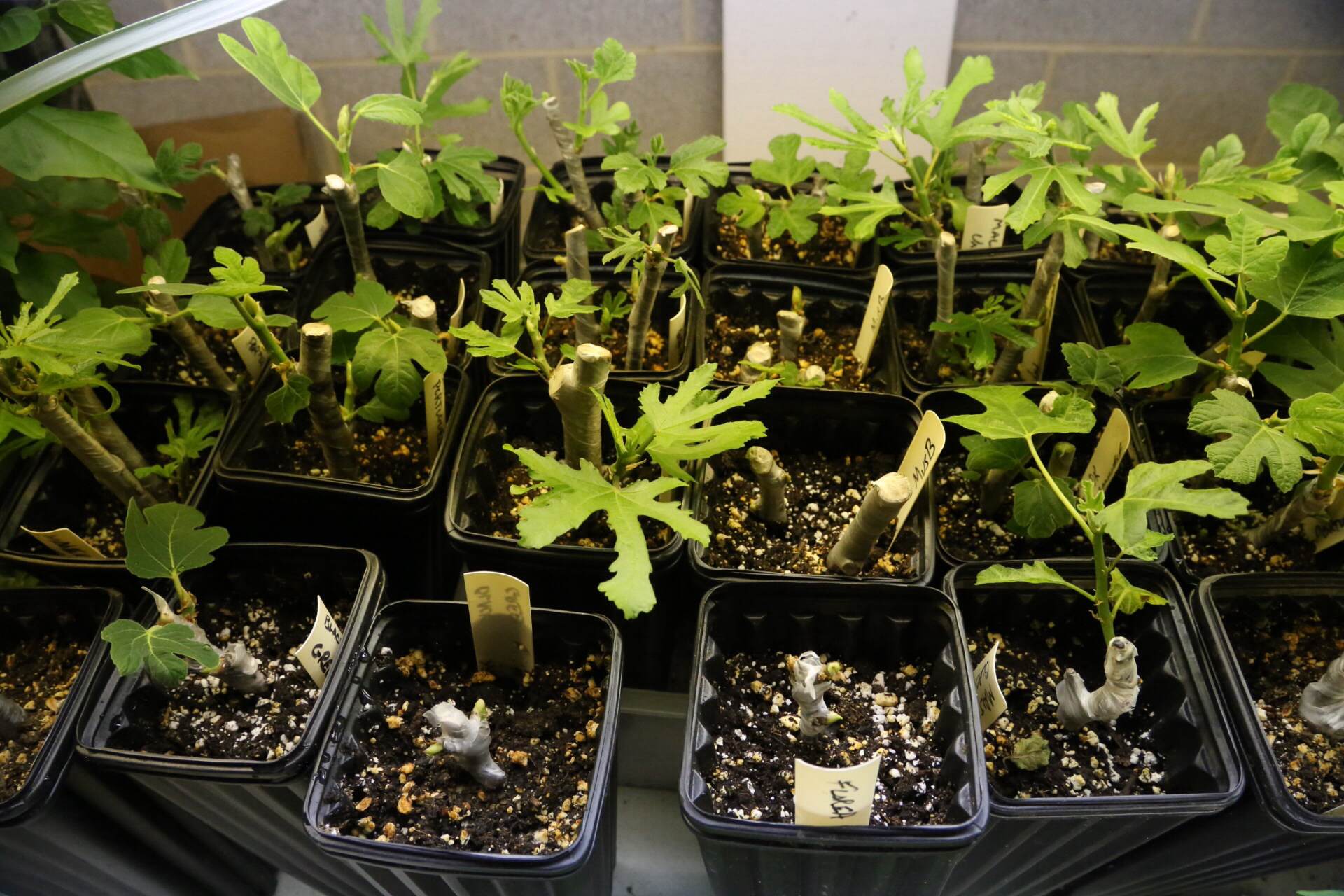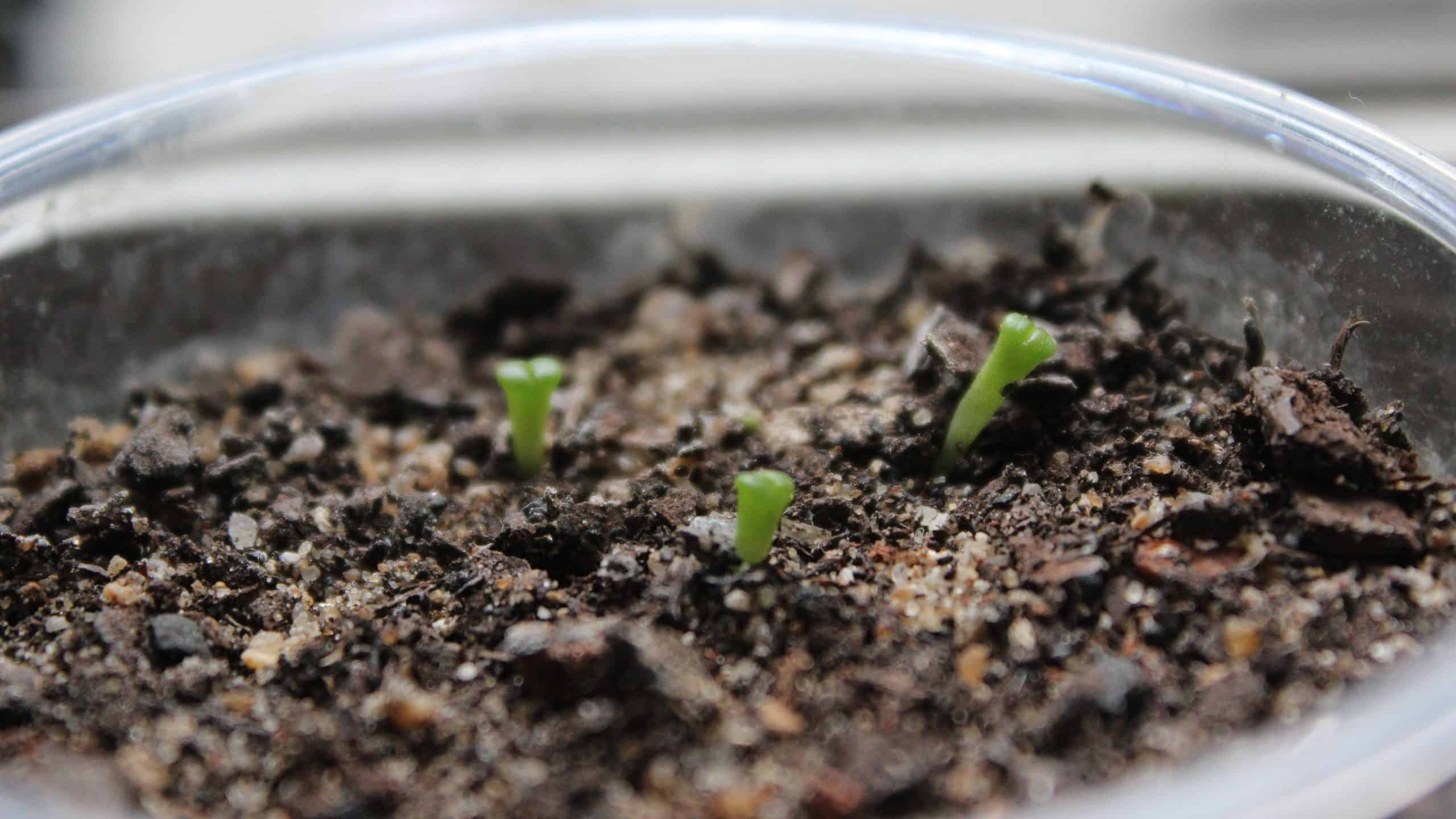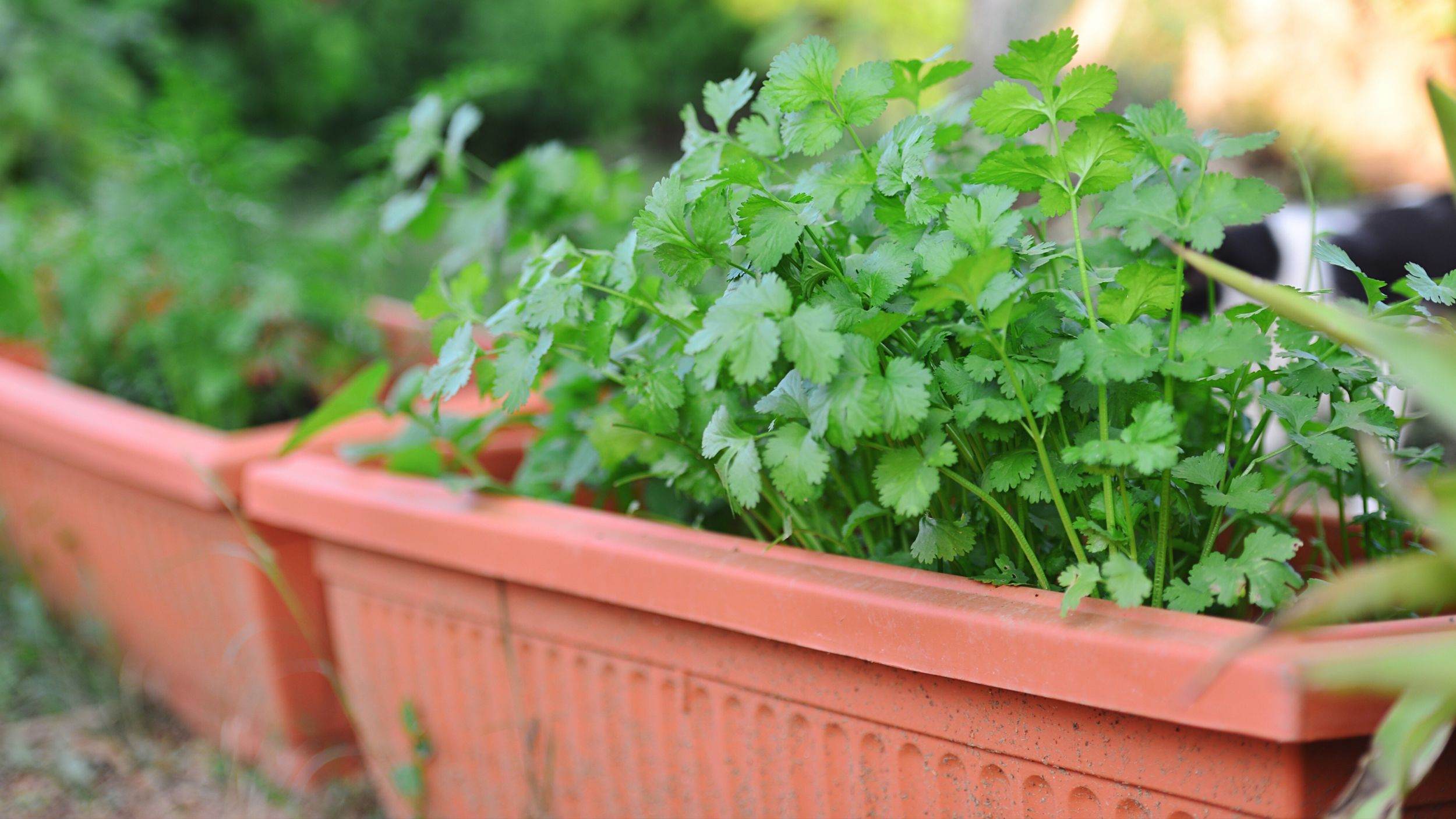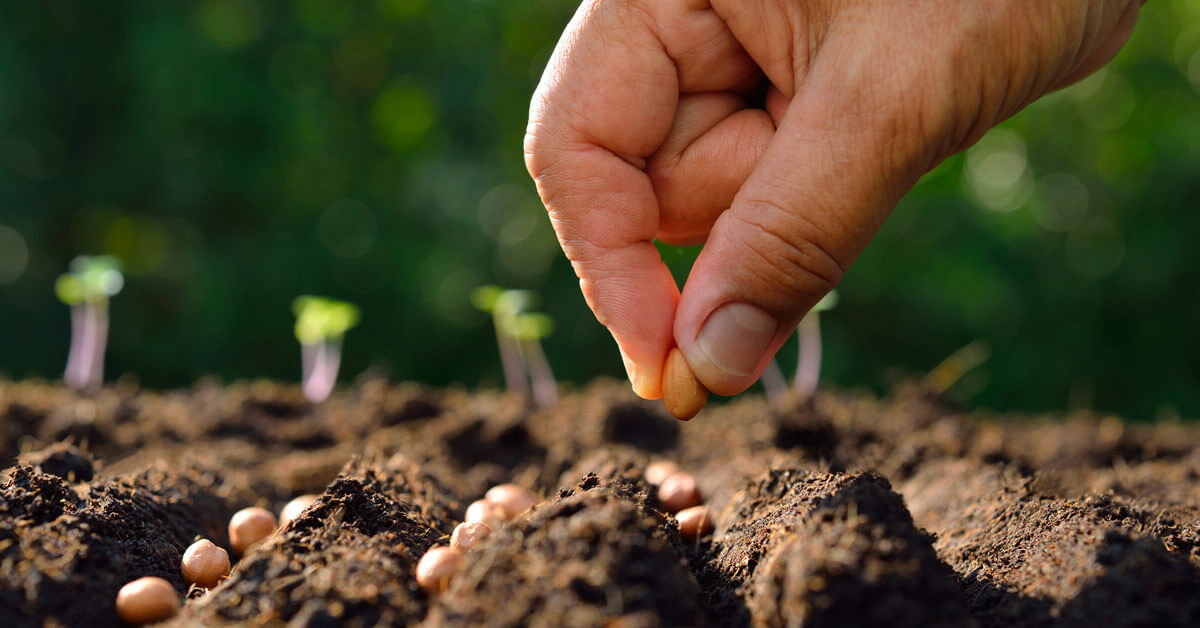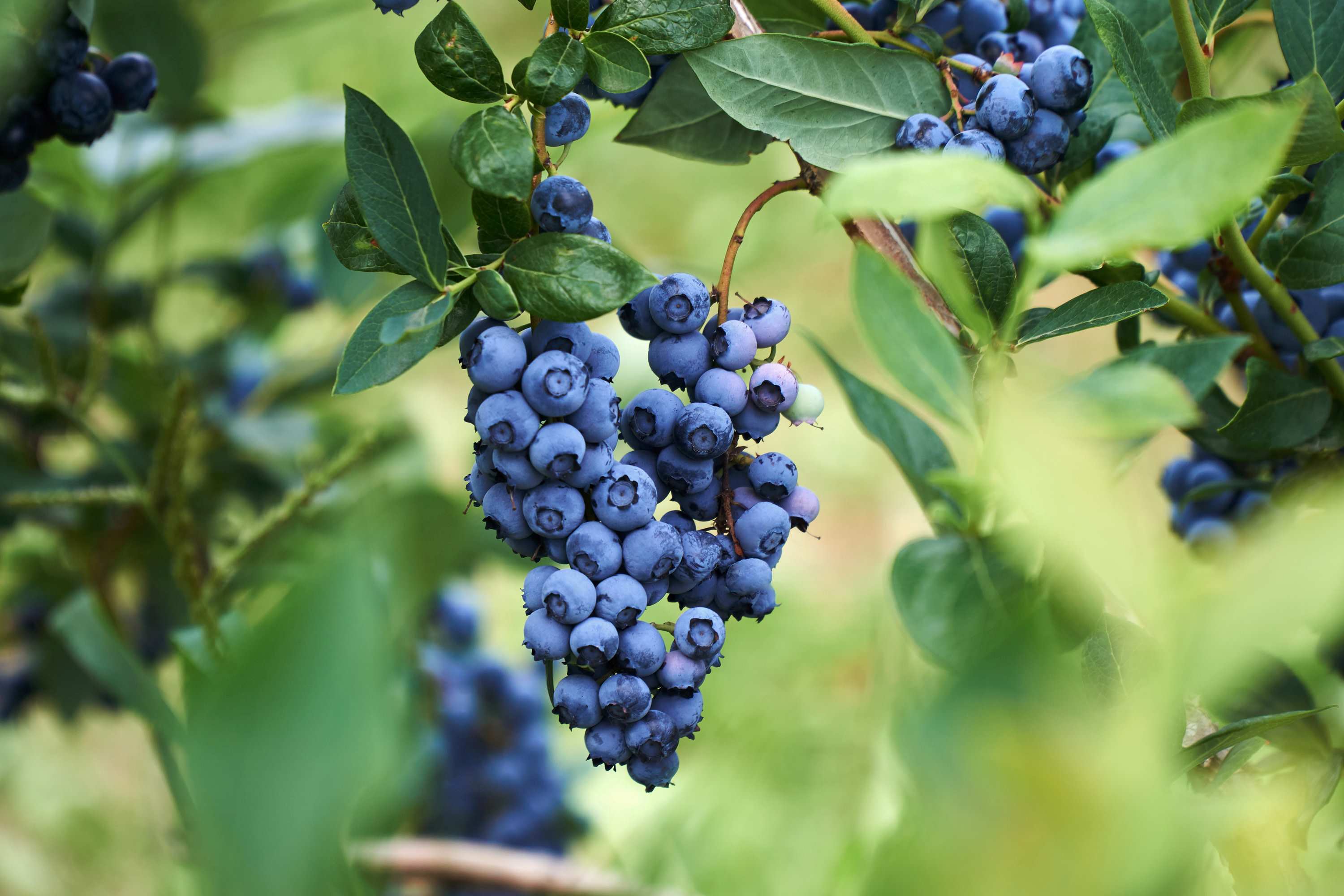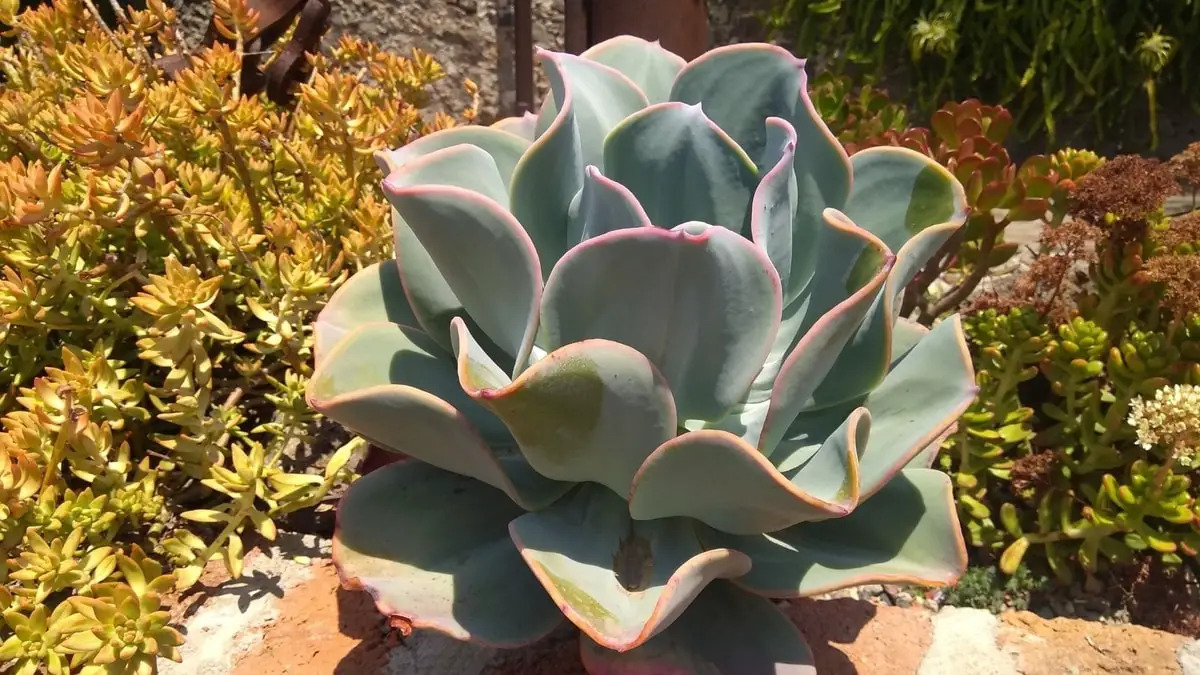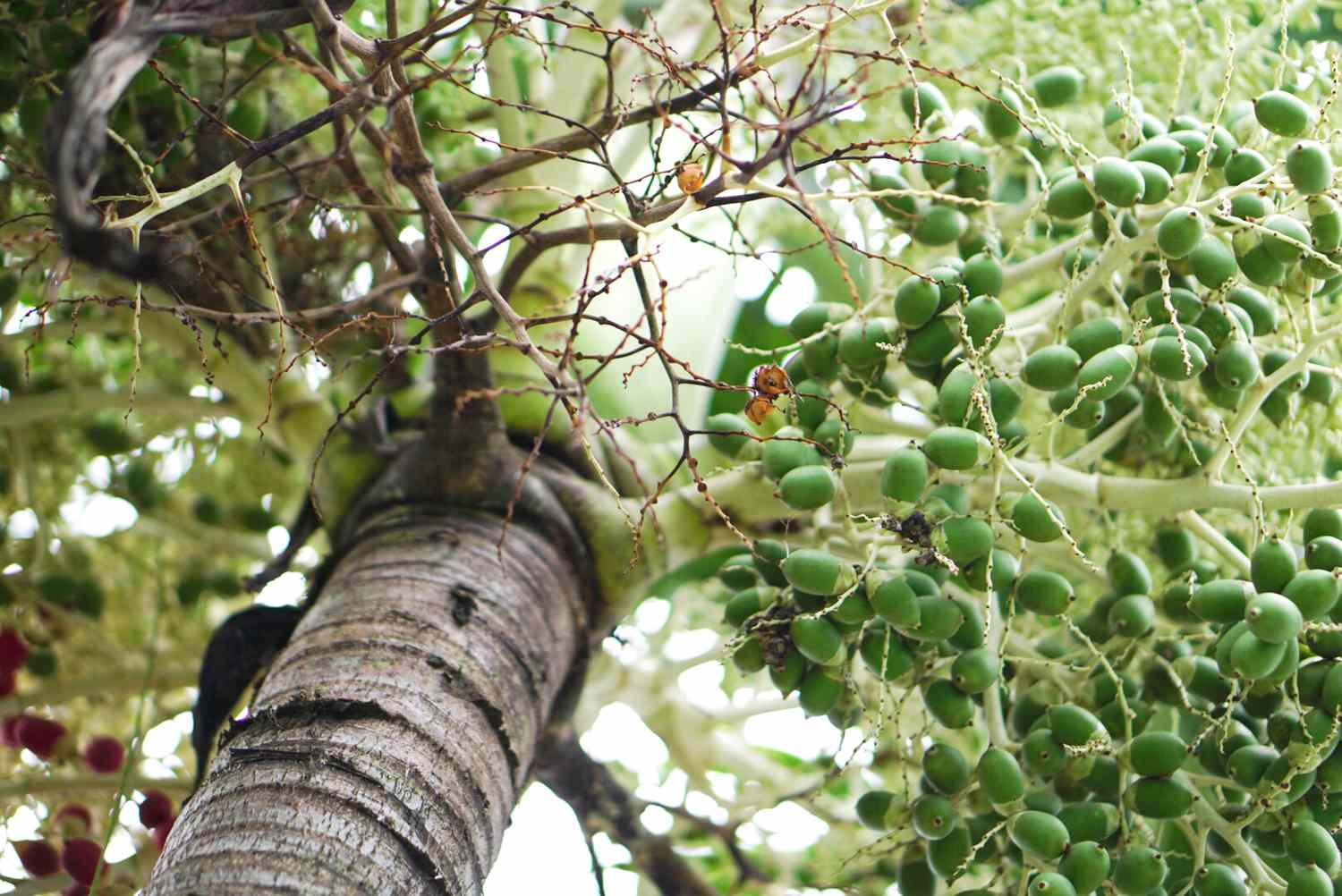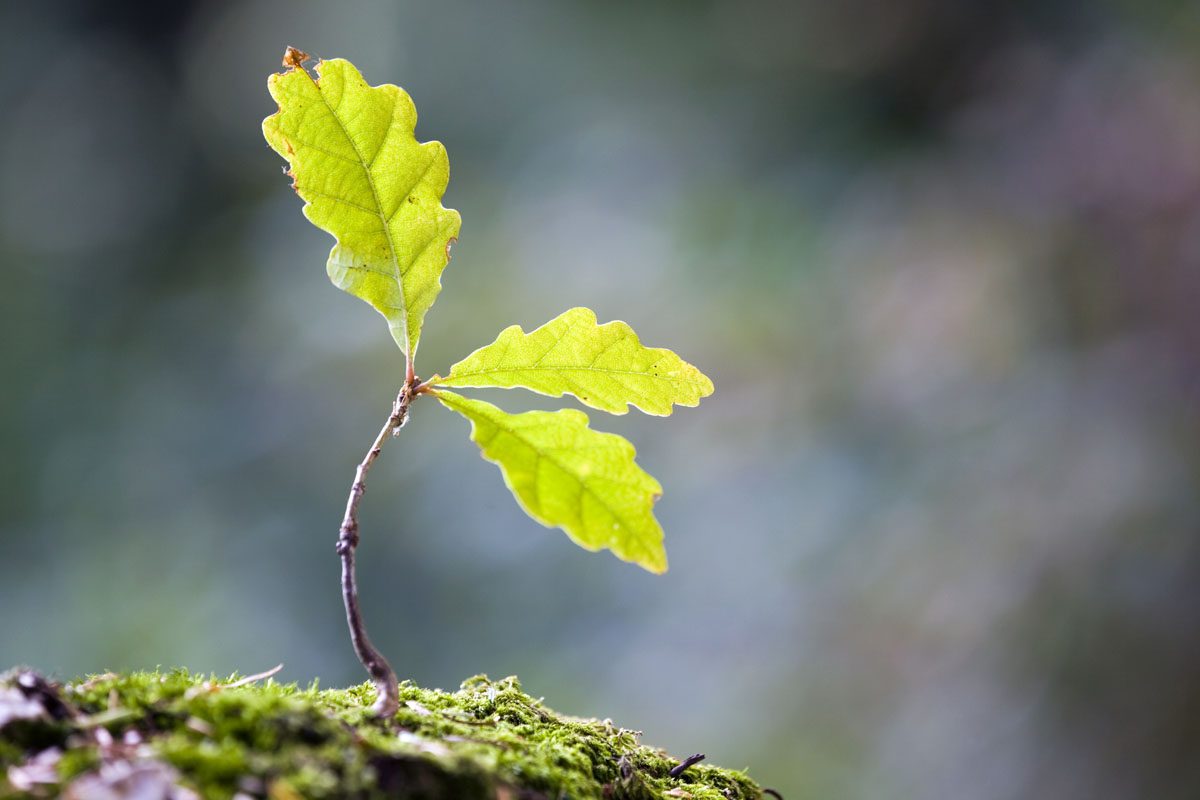Home>Types of Gardening>Ornamental Gardening>How To Grow Dolphin Succulents From Cuttings


Ornamental Gardening
How To Grow Dolphin Succulents From Cuttings
Modified: January 22, 2024
Learn the best techniques for propagating dolphin succulents from cuttings. Discover expert tips for successful ornamental gardening.
(Many of the links in this article redirect to a specific reviewed product. Your purchase of these products through affiliate links helps to generate commission for Chicagolandgardening.com, at no extra cost. Learn more)
Table of Contents
Introduction
Welcome to the enchanting world of ornamental gardening, where the beauty of nature intertwines with the artistry of cultivation. Within this realm, succulents stand out as resilient, low-maintenance plants that come in a stunning array of shapes and colors. Among these captivating succulents, the Dolphin Succulent, also known as Senecio peregrinus, has garnered attention for its unique foliage that resembles leaping dolphins.
In this comprehensive guide, we will delve into the art of propagating Dolphin Succulents from cuttings, allowing you to expand your garden with these mesmerizing plants. Whether you are a seasoned horticulturist or a budding enthusiast, the process of nurturing new life from cuttings offers a rewarding and fulfilling experience.
Join us as we explore the step-by-step journey of cultivating Dolphin Succulents, from selecting the perfect cutting to caring for the thriving plant. Embrace the joy of watching these whimsical succulents take root and flourish under your attentive care. Let's embark on this delightful horticultural adventure together, and witness the magic of propagating Dolphin Succulents come to life.
What Are Dolphin Succulents?
Dolphin Succulents, scientifically known as Senecio peregrinus, are a mesmerizing addition to any succulent collection. These unique plants are characterized by their distinctive foliage, which closely resembles leaping dolphins. The leaves are a vibrant shade of green and feature white markings that mimic the appearance of dolphins in mid-air, adding a touch of whimsy to any garden or indoor space.
Native to South Africa, Dolphin Succulents belong to the Asteraceae family and thrive in warm, arid climates. Their natural habitat has endowed them with a remarkable ability to store water in their fleshy leaves, making them well-suited for dry environments and drought-tolerant landscaping.
When grown under optimal conditions, Dolphin Succulents produce trailing stems adorned with succulent leaves, creating an elegant cascading effect. This growth habit makes them particularly well-suited for hanging baskets, where their charming foliage can gracefully spill over the edges, adding a touch of natural artistry to any setting.
These captivating succulents are not only visually stunning but also relatively low-maintenance, making them an ideal choice for both seasoned gardeners and newcomers to the world of ornamental plants. Their unique appearance and undemanding nature have made Dolphin Succulents a sought-after addition to gardens, terrariums, and indoor plant collections around the world.
Benefits of Growing Dolphin Succulents from Cuttings
Growing Dolphin Succulents from cuttings offers a host of benefits that make it a rewarding and enjoyable horticultural endeavor. By propagating these charming succulents through cuttings, you can unlock a world of possibilities and reap the following advantages:
- Preservation of Unique Traits: Propagating Dolphin Succulents from cuttings allows you to preserve the distinct characteristics of the parent plant, including the whimsical dolphin-like foliage. This method ensures that the new plants inherit the captivating features that make Dolphin Succulents so appealing.
- Expansion of Your Collection: By successfully growing Dolphin Succulents from cuttings, you can expand your succulent collection without the need to purchase additional plants. This not only saves money but also provides a sense of fulfillment as you witness new life sprouting from cuttings nurtured by your own hands.
- Customization and Gift-Giving: Propagating Dolphin Succulents from cuttings allows you to create personalized gifts for friends and loved ones. Whether you are sharing the joy of gardening with fellow enthusiasts or offering a thoughtful present, gifting propagated succulents adds a personal touch to any occasion.
- Learning and Skill Development: The process of growing Dolphin Succulents from cuttings provides valuable hands-on experience in plant propagation and care. It offers an opportunity to enhance your horticultural skills, deepen your understanding of succulent cultivation, and foster a deeper connection with nature.
- Environmental Sustainability: By propagating succulents from cuttings, you contribute to sustainable gardening practices. This method reduces the demand for commercially propagated plants, minimizing the environmental impact associated with large-scale production and transportation.
Embarking on the journey of growing Dolphin Succulents from cuttings not only yields a flourishing garden but also fosters a sense of accomplishment and connection with the natural world. The benefits extend beyond the realm of gardening, enriching your life with creativity, mindfulness, and the joy of nurturing new life.
Materials Needed
Embarking on the rewarding venture of growing Dolphin Succulents from cuttings requires a few essential materials to ensure the successful propagation and nurturing of these captivating plants. Before delving into the propagation process, gather the following materials to create an optimal environment for the cuttings to take root and thrive:
- Healthy Dolphin Succulent: Begin with a healthy and mature Dolphin Succulent plant as the source of your cuttings. Select a plant with vibrant, pest-free foliage and robust stems, as these attributes contribute to the success of the propagation process.
- Clean, Sharp Pruning Shears: Use clean and sharp pruning shears to take cuttings from the parent plant. Sterilize the shears before use to prevent the transmission of pathogens and ensure clean cuts that promote the healthy development of the cuttings.
- Well-Draining Potting Mix: Prepare a well-draining potting mix suitable for succulents. Consider a mix formulated for cacti and succulents, or create a blend using components such as coarse sand, perlite, and peat moss to provide the ideal growing medium for the cuttings.
- Propagation Container: Select a small, clean container for rooting the cuttings. The container should have drainage holes to prevent waterlogging and promote healthy root development. A shallow tray or individual pots can serve as suitable propagation containers.
- Rooting Hormone (Optional): While not mandatory, a rooting hormone can expedite the rooting process and enhance the success rate of propagation. Consider using a rooting hormone powder or gel to encourage robust root development in the cuttings.
- Misting Bottle: A misting bottle filled with clean water will aid in maintaining the optimal moisture levels for the cuttings. Regular misting helps prevent dehydration and creates a humid microclimate conducive to root formation.
- Indirect Light Source: Identify a location with bright, indirect light to provide the cuttings with the requisite light energy for photosynthesis. Avoid direct sunlight, as it may scorch the delicate cuttings during the initial rooting phase.
- Patience and Care: Last but certainly not least, arm yourself with patience, attentiveness, and a nurturing spirit. Cultivating Dolphin Succulents from cuttings is a labor of love that rewards those who tend to the process with care and dedication.
Assemble these materials to set the stage for a successful propagation journey, laying the groundwork for the growth and flourishing of your newly propagated Dolphin Succulents.
Step 1: Selecting the Right Cutting
The initial step in propagating Dolphin Succulents from cuttings is to select the right stem segments from the parent plant. This critical phase sets the foundation for successful propagation and the subsequent growth of healthy, thriving succulents. Follow these guidelines to identify and prepare the optimal cuttings for propagation:
- Choose Healthy, Mature Stems: Look for mature, healthy stems on the parent Dolphin Succulent plant. Opt for stems that are plump, firm, and free from signs of damage or disease. Healthy stems are more likely to yield successful cuttings with robust growth potential.
- Focus on Vigorous Growth: Select stem segments that exhibit active growth, characterized by the presence of new leaf pairs and a vibrant green coloration. Avoid using stems that appear stunted or show signs of stress, as they may have reduced viability for propagation.
- Inspect Leaf Nodes: Examine the stems to identify prominent leaf nodes, which are the sites from which roots will emerge. Each cutting should ideally include multiple leaf nodes to maximize the potential for root development and overall vitality.
- Utilize Clean, Sharp Tools: Use clean and sharp pruning shears to take cuttings from the selected stems. Ensure that the shears are sterilized to minimize the risk of introducing pathogens to the cuttings. Make clean, diagonal cuts to sever the stems, providing a fresh surface for root initiation.
- Consider Stem Length: Aim for cutting segments that are approximately 3 to 4 inches in length, as this size provides an adequate stem length for stability and a sufficient number of leaf nodes for potential root generation.
- Allow Cuttings to Callus: After taking the cuttings, allow the severed ends to air dry in a shaded area for a day or two. This period enables the cut ends to form a protective callus layer, reducing the risk of rot when the cuttings are placed in the rooting medium.
By carefully selecting and preparing the right cuttings from the parent Dolphin Succulent, you lay the groundwork for successful propagation and the emergence of vibrant, new plants that encapsulate the charm and allure of these enchanting succulents.
Step 2: Preparing the Cutting
Once you have carefully selected the ideal stem segments from the parent Dolphin Succulent, the next step involves preparing the cuttings to create an optimal environment for root development. Proper preparation is essential to enhance the cuttings’ ability to establish roots and embark on their journey towards becoming independent, thriving plants. Follow these essential steps to prepare the cuttings for successful propagation:
- Trimming the Leaves: Gently remove the lowermost leaves from the stem segments, leaving a clean, bare section at the lower end. This process minimizes the likelihood of the leaves coming into contact with the rooting medium, reducing the risk of rot and promoting aeration around the stem base.
- Allowing Callus Formation: As mentioned in the previous step, ensure that the severed ends of the cuttings have formed a protective callus layer before proceeding with the next phase. The callus acts as a natural barrier, safeguarding the cuttings against potential moisture-related issues during the rooting process.
- Optional Use of Rooting Hormone: If desired, consider applying a rooting hormone to the base of the cuttings to stimulate root development. Dip the callused ends of the cuttings into the rooting hormone, following the product’s instructions for proper application. While not mandatory, rooting hormone can expedite the rooting process and bolster the cuttings’ ability to establish roots.
- Preparation of Propagation Container: Fill the chosen propagation container with a well-draining potting mix suitable for succulents. Create an indentation or small hole in the rooting medium to accommodate the base of the cuttings, ensuring secure placement and stability.
- Inserting the Cuttings: Carefully insert the prepared cuttings into the rooting medium, ensuring that at least one or two leaf nodes are buried beneath the surface. Gently firm the surrounding medium to provide support and establish contact between the cuttings and the rooting environment.
- Maintaining Adequate Spacing: Space the cuttings appropriately within the propagation container, allowing ample room between each cutting to facilitate air circulation and prevent overcrowding. Adequate spacing reduces the risk of moisture-related issues and promotes individualized root development.
By meticulously preparing the cuttings and creating an optimal environment for root initiation, you set the stage for the emergence of resilient, self-sustaining roots and the subsequent growth of new Dolphin Succulents that embody the charm and allure of their parent plant.
Step 3: Rooting the Cutting
Rooting the prepared cuttings is a pivotal phase in the propagation process, marking the transition from severed stem segments to independent, self-sustaining plants. This stage focuses on facilitating the development of robust root systems, laying the groundwork for the cuttings to establish themselves and thrive as individual Dolphin Succulents. Follow these essential steps to foster the rooting of the cuttings and set them on the path to vitality and growth:
- Optimal Environmental Conditions: Place the propagation container in a location with bright, indirect light to provide the cuttings with the requisite light energy for photosynthesis. Ensure that the area maintains a consistent temperature between 65-75°F (18-24°C), fostering an environment conducive to root initiation and overall growth.
- Maintaining Adequate Moisture: Monitor the moisture levels in the rooting medium, ensuring that it remains lightly moist but not waterlogged. Use a misting bottle to lightly spray the surface of the medium when it begins to dry out, maintaining a balanced level of moisture essential for root development.
- Observation and Patience: Exercise patience and attentiveness as the cuttings embark on their rooting journey. Regularly inspect the cuttings for signs of root development, which may become visible after several weeks. Avoid disturbing the cuttings unnecessarily, allowing them the time and space to establish roots undisturbed.
- Indications of Root Growth: Look for subtle indicators of root initiation, such as the emergence of new growth or a slight firming of the cuttings within the rooting medium. These signs suggest that the cuttings are actively establishing roots and transitioning towards self-sufficiency.
- Resisting the Urge to Rush: Refrain from prematurely transferring the cuttings to soil before they have developed an adequate root system. Rushing this stage may jeopardize the successful establishment of the cuttings and impede their ability to thrive independently.
- Encouraging Root Development: If necessary, provide gentle bottom heat to the propagation container to promote root development. Utilize a heating mat designed for seed starting and propagation, maintaining a consistent, low-level warmth that encourages the cuttings to initiate and strengthen their root systems.
By providing the cuttings with the optimal environmental conditions, attentive care, and the necessary time to establish roots, you pave the way for the emergence of resilient, self-sustaining root systems that will support the growth and flourishing of the newly propagated Dolphin Succulents.
Step 4: Transferring to Soil
As the propagated Dolphin Succulent cuttings develop robust root systems, the time eventually arrives to transition them from the rooting medium to soil, where they will continue their journey towards independent growth and vitality. This pivotal step marks a significant milestone in the propagation process, setting the stage for the cuttings to establish themselves in their new environment and thrive as individual plants. Follow these essential steps to facilitate the seamless transfer of the rooted cuttings to soil:
- Selection of Suitable Containers: Choose small, well-draining pots or containers for planting the rooted cuttings. Opt for containers with drainage holes to prevent waterlogging, promoting healthy root growth and reducing the risk of moisture-related issues.
- Preparation of Potting Mix: Prepare a well-draining potting mix tailored for succulents, ensuring a balanced blend of components such as coarse sand, perlite, and peat moss. This mix provides the ideal growing medium for the rooted cuttings, offering a supportive environment for continued development.
- Transferring the Rooted Cuttings: Gently remove the rooted cuttings from the propagation container, taking care to avoid damaging the delicate roots. Handle the cuttings with care as you prepare to transfer them to the prepared pots, ensuring a smooth and seamless transition.
- Nestling the Cuttings in Soil: Create indentations in the potting mix within the chosen containers, providing a snug and secure space for planting the rooted cuttings. Position the cuttings in the soil, ensuring that the roots are comfortably nestled within the potting mix and the base of the stems is positioned at the appropriate depth.
- Firming the Surrounding Soil: Gently firm the soil around the base of each cutting, providing stability and support while avoiding excessive compaction. This step ensures that the cuttings are securely positioned in the soil, fostering a conducive environment for continued root development and overall growth.
- Initial Watering and Acclimatization: After planting the rooted cuttings, provide a light watering to settle the soil and initiate the acclimatization process. Allow any excess water to drain from the pots, and then place the newly potted cuttings in a location with bright, indirect light to facilitate their transition to the soil environment.
By orchestrating the seamless transfer of the rooted cuttings to soil, you provide them with the opportunity to establish themselves in their new habitat, laying the groundwork for continued growth, vitality, and the flourishing of independent Dolphin Succulent plants.
Step 5: Caring for Your Dolphin Succulent
After successfully propagating and transferring your Dolphin Succulent cuttings to soil, providing attentive care is essential to ensure their continued well-being and thriving growth. Caring for these charming succulents involves a combination of mindful maintenance practices and a nurturing approach tailored to their specific needs. Embrace the following guidelines to cultivate a nurturing environment and foster the flourishing of your propagated Dolphin Succulents:
- Optimal Light Conditions: Position the potted Dolphin Succulents in a location that receives bright, indirect light. These plants thrive in well-lit environments, but direct sun exposure, especially during the intense midday hours, should be avoided to prevent leaf scorching.
- Moderate Watering Regimen: Adhere to a cautious watering routine, allowing the soil to dry out partially between watering sessions. Overly wet conditions can lead to root rot, while underwatering may result in dehydration. Strike a balance by providing moderate moisture, adjusting the frequency based on seasonal and environmental factors.
- Appropriate Temperature and Humidity: Maintain a consistent temperature range between 65-75°F (18-24°C), as Dolphin Succulents thrive in moderate, warm conditions. Additionally, ensure adequate air circulation to prevent the buildup of excessive humidity, which can compromise the overall health of the plants.
- Fertilization Considerations: Use a balanced, diluted succulent fertilizer during the active growing season, applying it sparingly to avoid overfeeding. Fertilize the plants at a reduced frequency or cease fertilization during the dormant winter months, allowing them to rest and conserve energy.
- Pest Monitoring and Prevention: Regularly inspect the Dolphin Succulents for signs of pests such as aphids, mealybugs, or spider mites. If detected, address pest issues promptly using natural or targeted control methods to safeguard the plants from infestations.
- Pruning and Maintenance: Periodically remove any withered or damaged foliage to maintain the overall health and appearance of the succulents. Pruning encourages new growth and enhances the aesthetic appeal of the plants, contributing to their well-being and visual allure.
- Seasonal Considerations: Acknowledge the seasonal fluctuations in light, temperature, and moisture levels, adjusting your care regimen accordingly. During the winter months, reduce watering and provide protection from cold drafts, while the active growing season may necessitate more frequent attention to watering and fertilization.
By embracing a mindful and attentive approach to caring for your propagated Dolphin Succulents, you foster an environment where these captivating plants can thrive and enchant with their whimsical foliage, resilient nature, and enduring beauty.
Conclusion
Cultivating Dolphin Succulents from cuttings is a gratifying journey that intertwines the art of propagation with the joy of nurturing new life. From the careful selection of stem segments to the seamless transfer to soil and ongoing care, each step in the propagation process invites horticultural enthusiasts to immerse themselves in the captivating world of succulent cultivation. As the whimsical foliage of Dolphin Succulents graces gardens, terrariums, and indoor spaces, their resilience and low-maintenance nature make them an ideal choice for both seasoned gardeners and beginners.
By propagating these enchanting succulents from cuttings, horticulturists not only expand their plant collections but also preserve the unique traits of the parent plants, fostering a deeper connection with the natural world. The benefits extend beyond personal enjoyment, encompassing environmental sustainability through reduced demand for commercially propagated plants and the sharing of propagated succulents as personalized gifts, enriching the lives of fellow enthusiasts and loved ones.
As you embark on the propagation journey and witness the emergence of vibrant, new Dolphin Succulents, remember that attentive care, patience, and a nurturing spirit are essential companions. Providing these charming plants with the optimal growing conditions, mindful maintenance, and seasonal considerations cultivates an environment where they can thrive and enchant with their captivating foliage.
May the art of propagating Dolphin Succulents from cuttings not only yield flourishing plants but also nurture a deeper appreciation for the resilience and natural beauty found within the world of ornamental gardening. Embrace the enchanting allure of Dolphin Succulents, and may your horticultural endeavors continue to bloom with creativity, mindfulness, and the enduring wonder of nature’s artistry.
